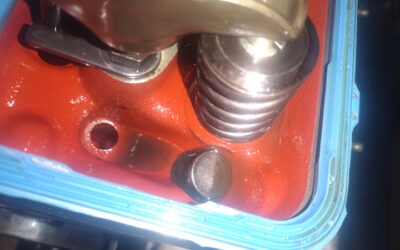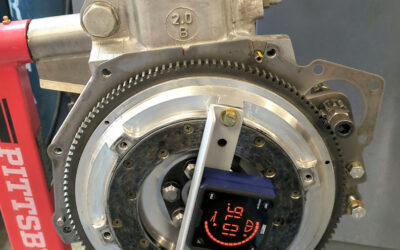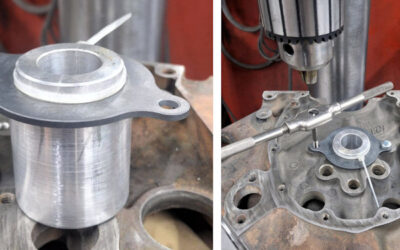CAMSHAFT INDENTIFICATION
Our shop has had a cam analyzer for over 28 years. Recently I was at an friends shop and had to remember how we did it in the old days. He needed to verify which of the three customer-supplied cams to install because the previous shop had ground the name and ID numbers off all three! — I told him to install the cam in his lathe on centers, with a degree wheel on the tailstock end, and to put a pointer on the degree wheel as well. A small piece of heater hose over the tailstock center will hold the degree wheel up against the end of the cam. I then instructed him to put a magnetic base dial indicator on the lathe’s cross slide and set it up against a lobe. We zeroed the pointer and the dial indicator. We rotated the cam until the indicator read .050”, at that time we set the degree wheel to zero without moving the cam. We then rotated the cam over the lobe until the indicator again read .050” and took that number and multiplied by two. This number is the duration at .050 for that lobe. Do each lobe a few times until you get repeatable results, then move on to that cylinder’s other lobe and do the same thing. Then move to the lobe’s top and zero the indicator. go .050 down one side of the lobe and zero the degree wheel, then go up over the top of the lobe to .050 down the other side of the same lobe. Read the degree difference, divide by two and set the degree wheel to zero. Move the indicator to that cylinder’s other lobe, and zero the indicator again at the lobes top. Go down one side .050 and record the number, then go down the other side of the lobe .050 and record that number. Again divide by two, subtract the one number from the other number again, and that is your lobe center in degrees. Play with a known cam until you get the hang of things and can get good results. You may be off a few degrees off one way or another, but with care you will get close enough to identify an unknown cam. — For lobe lift numbers, just zero the indicator on the base circle, then rotate the cam to the highest number, and that will be the lobe lift. Multiply that by the rocker ratio and you have the lift at the valve.
Timm Jurinc
Tuf-Enuf Auto & Marine Performance
February, 2018




